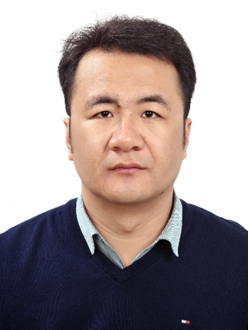THE THIRD INTERNATIONAL SYMPOSIUM
ON THERMAL-FLUID DYNAMICS 2022
(ISTFD 2022 )

THE THIRD INTERNATIONAL SYMPOSIUM
ON THERMAL-FLUID DYNAMICS 2022
(ISTFD 2022 )

Chengzhen Sun
State Key Laboratory of Multiphase Flow in Power Engineering, Xi’an Jiaotong University, Xi’an, Shaanxi 710049, China
E-mail: sun-cz@xjtu.edu.cn
Chengzhen Sun received the B.Eng. degree in thermal engineering from Xi’an Jiaotong University, Xi’an, China in 2008 and the Ph.D. degree in Power Engineering and Engineering Thermophysics from Xi’an Jiaotong University, Xi’an, China in 2014. As a Ph.D student, he studied at the Department of Mechanical Engineering in MIT as a visiting student from 2012 to 2013. He started his academic career as a Lecturer at Xi’an Jiaotong University, China in 2014 and then worked as Young Talent Professor in 2021. Currently, his researches focus on mass and energy transport of nanoconfined fluids, especially on nanoscale multiphase flow, to develop high-efficiency technologies of membrane separation, enhanced oil recovery and energy conversion. He published more than 50 peer-reviewed SCI-indexed papers in the journals of Acs Nano (1), Science Bulletin (2), J Phys Chem Lett (3), Phys Chem Chem Phys (5), Langmuir (2) etc. His papers have received citations up to 1000 times in the journal of Nature and others. He was invited to publish book chapter, review paper, perspective and highlight, and serve as the leading editor of a special issue “Nanoconfined fluids in energy applications” in the SCI-indexed journal of Frontiers in Energy Research. He was honored as the Best Doctoral Thesis in Shaanxi Province, Annual Best Paper in Science Bulletin and others.
Title:Nanoscale Multiphase Flow: From Basic Theory to Applications
Abstract:在膜分离、油气开采、能源转化等领域,广泛存在气、液等多种相态的流体被限制在纳米尺度空间中的情况。在纳米空间中,由于范德华力、静电力等表面力对流体的流动过程起主导作用,多相流动过程跟宏观管道中会截然不同。因此,研究纳米空间中的多相流动过程对相关技术的发展和多相流学科的拓展都具有重要意义。在纳米尺度下,首先流型与宏观尺度有很大不同,由于重力、浮力等体积力影响不显著,并且属于层流状态,不会出现泡状流、弹状流等复杂的流型;其次,气液流体本身的特性及其界面特性会发生改变,比如液体密度粘度会改变、气液界面特性会受固体壁面的影响;第三,气液本身的单相流动特性就跟宏观情况下不一样,气体是努森流,液体还是连续流。本报告以纳米通道中气液毛细相变驱动流动、强流固作用下的气液环状流、水驱油两相渗吸流动为例,详细阐述纳米尺度多相流与宏观尺度多相流从流动机制、动力学、理论建模到调控手段等方面的区别。最后,介绍基于这些基础理论研究开发的纳米多孔薄膜气体分离与海水淡化膜分离技术和反向电渗析盐差能发电技术。
In membrane separation, oil and gas exploitation, energy conversion and other fields, there are a wide range of fluid phases such as gas and liquid confined in the nanoscale space. In nanospace, because surface forces such as van der Waals forces and electrostatic forces play a leading role in the flow process of fluids, the multiphase flow process will be completely different from that in macroscopic tubes. Therefore, the study of multiphase flow in nanospace is of great significance to the development of related technologies and the expansion of multiphase flow science. At the nanoscale, the flow pattern is very different from that at the macroscopic scale. Due to the insignificant influence of volume forces such as gravity and buoyancy, and the laminar flow state, there will be no bubble flow, slug flow and other complex flow patterns. Secondly, the characteristics of gas/liquid fluids and their interface will change, for example, the density and viscosity of liquid will change, and the characteristics of gas-liquid interface will be affected by the solid wall. Thirdly, the single-phase flow characteristics of gas and liquid are different from the macroscopic situation; gas is Knudsen flow, but liquid is still continuous flow. In this presentation, the differences between nanoscale multiphase flow and macroscale multiphase flow from flow mechanism, dynamics, theoretical modeling and regulation methods are described in detail, by taking gas-liquid capillary phase transition driven flow, gas-liquid annular flow under strong fluid-solid interaction, and water-oil two-phase imbibition flow. Finally, based on these basic theories, the technologies of gas separation and seawater desalination membrane separation and reverse electrodialysis salinity-gradient energy power generation are introduced.